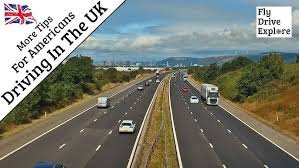Top Tips for Driving in the UK as a Tourist
Driving in the UK can be an exciting and convenient way to explore the country’s stunning landscapes, historic cities, and charming villages.

Top Tips for Driving in the UK as a Tourist
Driving in the UK can be an exciting and convenient way to explore the country’s stunning landscapes, historic cities, and charming villages. However, for tourists unfamiliar with British roads, it can also be a bit daunting. From driving on the left to navigating roundabouts, there are several unique aspects to consider. Whether you're planning a road trip through the Scottish Highlands or need reliable Glasgow Airport transfers to start your journey, these top tips will help you drive safely and confidently in the UK.
1. Drive on the Left Side of the Road
The most obvious difference for visitors is that the UK follows left-hand traffic. This means the steering wheel is on the right side of the car, and you must drive on the left side of the road. If you're renting a car, take some time to get used to the vehicle before hitting busy streets. A helpful tip is to remember that the driver should always be closest to the center of the road.
2. Understand Roundabouts
Roundabouts are common in the UK and can be confusing for first-time drivers. Always give way to traffic coming from your right, and signal correctly when exiting. Smaller roundabouts may not have lane markings, so stay alert. If you're heading to your hotel after landing and using Glasgow cab services, observe how local drivers handle roundabouts—it’s a great way to learn.

3. Familiarize Yourself with UK Road Signs
UK road signs follow a different system than many other countries. Speed limits, for example, are displayed in miles per hour (mph), not kilometers. Blue circular signs usually indicate mandatory instructions, while red triangular signs warn of hazards. Take time to study common signs before your trip to avoid confusion.
4. Stick to Speed Limits
Speed limits vary depending on the road type:
-
30 mph (48 km/h) – Built-up areas (unless signs state otherwise)
-
60 mph (97 km/h) – Single carriageways
-
70 mph (113 km/h) – Dual carriageways and motorways
Always check for posted limits, as speeding fines can be hefty.
5. Be Prepared for Narrow Roads
Many UK roads, especially in rural areas, are narrow and winding. If you encounter an oncoming vehicle, slow down and move to the left as much as possible. In some cases, you may need to reverse to a passing point—stay patient and communicate with other drivers.
6. Watch Out for Pedestrians and Cyclists
UK cities are pedestrian and cyclist-friendly, so always be cautious near crossings and bike lanes. Zebra crossings (black and white stripes) give pedestrians the right of way—stop if someone is waiting to cross.
7. Avoid Congestion Charges in Major Cities
London, Birmingham, and other cities have congestion charges or low-emission zones (LEZ). Check if your route requires payment to avoid fines. Some rental cars may include this fee, so confirm with your provider.
8. Use a Reliable GPS or Map App
While road signs are helpful, a GPS or app like Google Maps can make navigation much easier. Download offline maps if you’re traveling through areas with poor signal.
9. Know the Parking Rules
Parking regulations vary by location. Look for color-coded curb markings:
-
Yellow lines – Restrictions apply (check signs)
-
Red lines – No stopping at any time
-
Blue badge zones – Disabled parking only
10. Stay Calm in Heavy Traffic
UK cities can get congested, especially during rush hour. Stay patient, avoid aggressive driving, and plan your journeys outside peak times if possible.
By following these tips, you’ll enjoy a smooth and stress-free driving experience in the UK. Whether you're exploring bustling London streets or the scenic countryside, safe driving ensures a memorable trip!
What's Your Reaction?
















